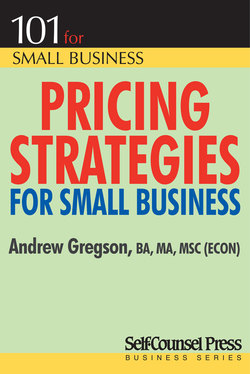Читать книгу Pricing Strategies for Small Business - Andrew Gregson - Страница 36
WAG, SWAG and STICK Methods
ОглавлениеIn so many small businesses, pricing goods and services is often based on guesswork, the WAG method (Wild-Ass Guess). WAG is a term to describe an on-the-fly appeal to intuitive processes that lie outside of standard accepted scientific methodology. In other words, it’s a plain, ordinary hunch. SWAG is a not very technical, time-honored acronym for Scientific Wild-Ass Guess, where there are some numbers to back up the guesswork. The STICK method means that every stick and nail is costed out.
WAG is best used only by those who have long experience in the industry or trade. This is an experience-based method for pricing where trial and costly errors have already taken place. If for the past ten years, it has cost $5,000 to renovate a bathroom then presumably it will always cost $5,000 to renovate a bathroom. Faced with creeping labor costs or perhaps sudden spikes in the price of plumbing fixtures, the WAG method, by not examining costs all the time frequently, makes price change sluggish and estimating unreliable. Faced with a new competitor in the market who is willing to undertake the same bathroom renovation for $3,500, the WAG method practitioner does not know how to respond properly. There is simply too much information that must be kept in the estimator’s head to stay current and remain competitive yet profitable. Worse yet, estimators are human and tend to respond to the last comment they had from a customer. If that comment was negative because the customer thought the price was too high, then the price on the next job will drop. If the business owner is also the estimator, then the price might reflect not value to the customer or even costs, but the perilous state of the bank account at the time.
There is a deeper concern that the WAG skill is not easy to transfer because it cannot be written down. In most small businesses where the owner of the company is the estimator, this skill and knowledge is largely not transferable to employees or a new owner. This implies that the business will be undervalued when so much of the company’s way of doing business is buried in the owner’s head. When the time comes for the owner to retire, therefore, the price will reflect that hurdle and the potential for the value of the sale will likely be lower.
SWAG method, as the name implies, has some numbers to back up the experience-based approach. “Okay, so that job will take four laborers five days to complete and I pay them $20 per hour. With labor cost at $3,200, add 1/3 for materials and then 1/3 for profit, that should be about it.” This rough-and-ready method does not take into account travel time, overhead and management costs, payroll taxes, nor fudge factor in case things go wrong. This job might actually lose money.
There is an alternate SWAG method employed in some construction trades — the 1/3, 1/3, 1/3 method. In these estimates, the materials are costed very carefully and the total costs multiplied by three to give 1/3 for the labor (being of equal value to the materials) and leaving 1/3 for profit. As the reader may appreciate, this is a scary method. Paint costs less than granite countertops so the pricing structure can get skewed. As a rule of thumb this method has its uses, but as a backup to any other method of estimating rather than the entire methodology. In other words, if your detailed method and the 1/3 method give the same answer, you can be reasonably certain that your pricing is near enough to the correct price to prevent any nasty surprises.
The STICK method is the name given to the clumsy and time-consuming method of working out the cost of each and every nail, foot of strapping, two by four, pot of paint and labor to the nearest 15 minutes to arrive at a total cost. It is very intensive and does not produce a better sales response from customers. In fact, the delay in getting quotes back to customers can be the sole deciding issue in whether or not your company gets the job.
The STICK method is, in fact, an adaptation of industrial manufacturing cost accounting methods to the businesses of service providers and custom builders. It can take place on paper, and I have also seen some very elaborate spreadsheets meant to cope with a vast amount of information. The advantage to having gone to the trouble of detailing every aspect of this “virtual build,” is that if and when the customer says “Okay,” you have a bill of materials for the purchasing department and a detailed plan for the carpenters.
There are two principal disadvantages to the STICK method. First is the speed factor. If you are an estimator for a home renovator for example, you must make at least two visits to the site and perhaps several phone calls before you have an answer. And there is always the feeling among business owners and estimators I have talked with that some estimates are just a waste of time, but they must go through this drawn-out procedure just because they were asked for a quote.
Second is that, having committed so much time and effort to the quote, the price is not easily altered to reflect customer expectations. In other words, if the quote is $7,000 and the customer’s budget does not extend beyond $5,000, you cannot easily and quickly find the savings to meet the price expectation. There is simply too much information to alter the quote simply and easily. The only line item that can easily be altered is the bottom line, and doing so may mean the job makes no money.
